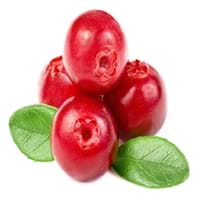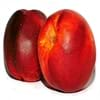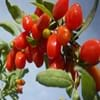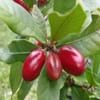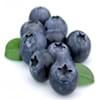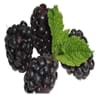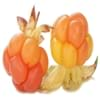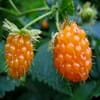Health Benefits
Cancer prevention, Heart care
Cancer prevention, Heart care, Kidney stone treatment, Scurvy treatment, Ulcer prevention
General Benefits
Anti oxidant properties, Boosts immune system, Digestive aid, Eye care, Helps in weight loss, Maintains healthy cholesterol level
Anti-inflammatory properties, Boosts immune system, Digestive aid, Fights against infections, Strengthens bones
Skin Benefits
Anti-aging benefits, Reduces wrinkles, Skin rejuvenation
Anti-aging benefits, Reduces wrinkles, Skin rejuvenation, Treatment of acne
Hair Benefits
Protects hair
Promotes longer and healthier hair, Protects hair, Treatment of dandruff
Allergy Symptoms
Anaphylaxis, Asthma, Breathing difficulty, Diarrhea, Hives, Itching, Itchy eyes, Skin rash, Sneezing, Swelling of mouth, tongue or lips, Tingling sensation in mouth, Vomiting, Watery eyes, Wheezing
Anaphylaxis, Breathing difficulty, Itching, Skin rash, Swelling of mouth, tongue or lips
Side Effects
Allergic reaction, Headache, Nausea
Allergic reaction, Diarrhoea, Nausea, Stomach pain, Vomiting
Best Time to Eat
Best if taken as a breakfast (or empty stomach), As a snack in the late afternoon, Eat the fresh ones, avoid mixing with any other foods, don't eat after meal., Morning time (before lunch)
Any time except an hour after meal, Don't consume at night and before bed
Vitamin B5 (Pantothenic Acid)
Vitamin C (Ascorbic Acid)
Vitamin K (Phyllochinone)
Calories in Fresh Fruit with Peel
Calories in Fresh Fruit without Peel
Not Available
Not Available
Calories in Frozen Form
Not Available
Calories in Canned Form
Not Available
Season
Autumn, Summer
Autumn
Varieties
Arctic Jay, Artic Rose, Artic Star, Armking, Desert Dawn, Fairlane, Fantasia, Silver Lode, Snow Queen, Stanwick and Stark Sunglo
Early Black, Howes, Ben Lear and Stevens
Color
Orange, Pink, Red, Yellow
Red
Inside Color
Yellow
White
Origin
China
North America
Soil Type
Sandy loam
Clay, Sandy, Well-drained
Climatic Conditions
Sunny, Warm
Warm
Facts about
- The name ‘nectarine’ is with reference to the sweet food the gods eat, ‘nectar’.
- Nectarines are sometimes called ‘shaved peaches’ because their skin is smooth with no fuzz.
- Europeans thought the cranberry blossom looked like the head of a sandhill crane, hence the name Cranberry.
- They are also known as bounce berries as they bounce when they ripe.
- Cranberries do not grow in water.
Spirits
Not Available
Yes
Top Producer
China
United States of America
Other Countries
Argentina, Chile, Egypt, Greece, Iran, Italy, Spain, Turkey, United States of America
Azerbaijan, Belarus, Bulgaria, Canada, Latvia, Macedonia, NA, Romania, Tunisia, Ukraine
Top Importer
Germany
Europe
Top Exporter
Spain
United States of America
Botanical Name
Prunus persica
Vaccinium Macrocarpon
Synonym
Not Available
Oxycoccus macrocarpus
Subkingdom
Tracheobionta
Tracheobionta
Division
Magnoliophyta
Magnoliophyta
Class
Magnoliopsida
Magnoliopsida
Subclass
Rosidae
Dillenhidae
Family
Rosaceae
Ericaceae
Species
P. persica
Vaccinium macrocarpon
Difference Between Nectarine and Cranberry
We might think that Nectarine and Cranberry are similar with respect to nutritional value and health benefits. But the nutrient content of both fruits is different. Nectarine and Cranberry Facts such as their taste, shape, color, and size are also distinct. The difference between Nectarine and Cranberry is explained here.
The amount of calories in 100 gm of fresh Nectarine and Cranberry with peel is 44.00 kcal and 46.00 kcal and the amount of calories without peel is Not Available and Not Available respectively. Thus, Nectarine and Cranberry belong to Low Calorie Fruits and Low Calorie Fruits category.These fruits might or might not differ with respect to their scientific classification. The order of Nectarine and Cranberry is Rosales and Ericales respectively. Nectarine belongs to Rosaceae family and Cranberry belongs to Ericaceae family. Nectarine belongs to Prunus genus of P. persica species and Cranberry belongs to Vaccinium genus of Vaccinium macrocarpon species. Beings plants, both fruits belong to Plantae Kingdom.

